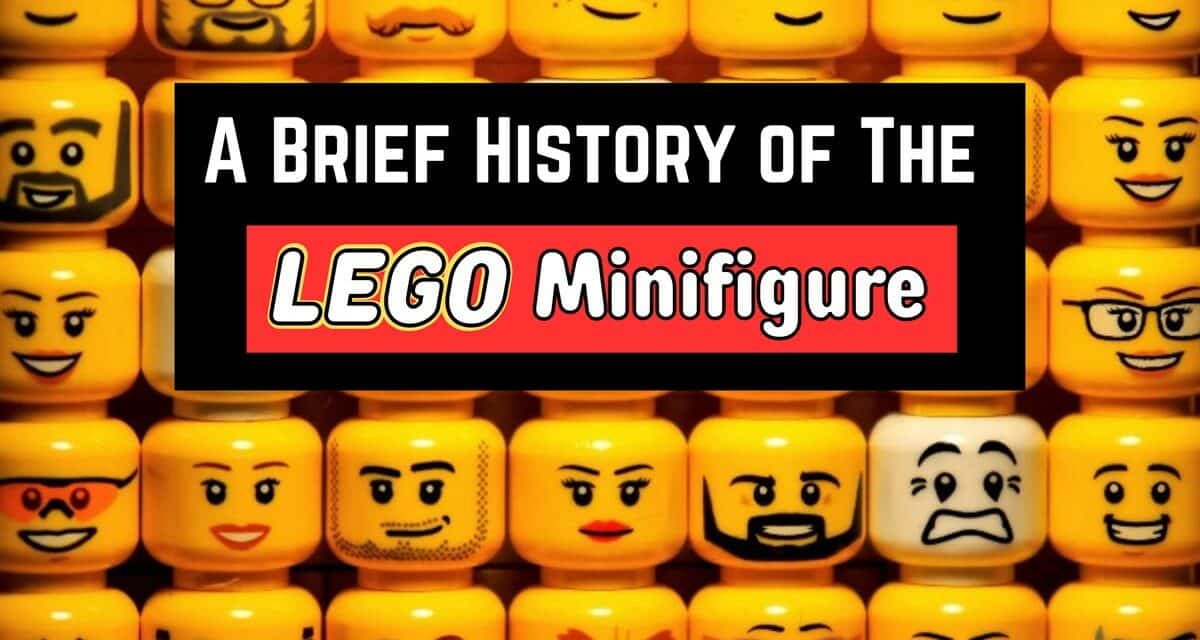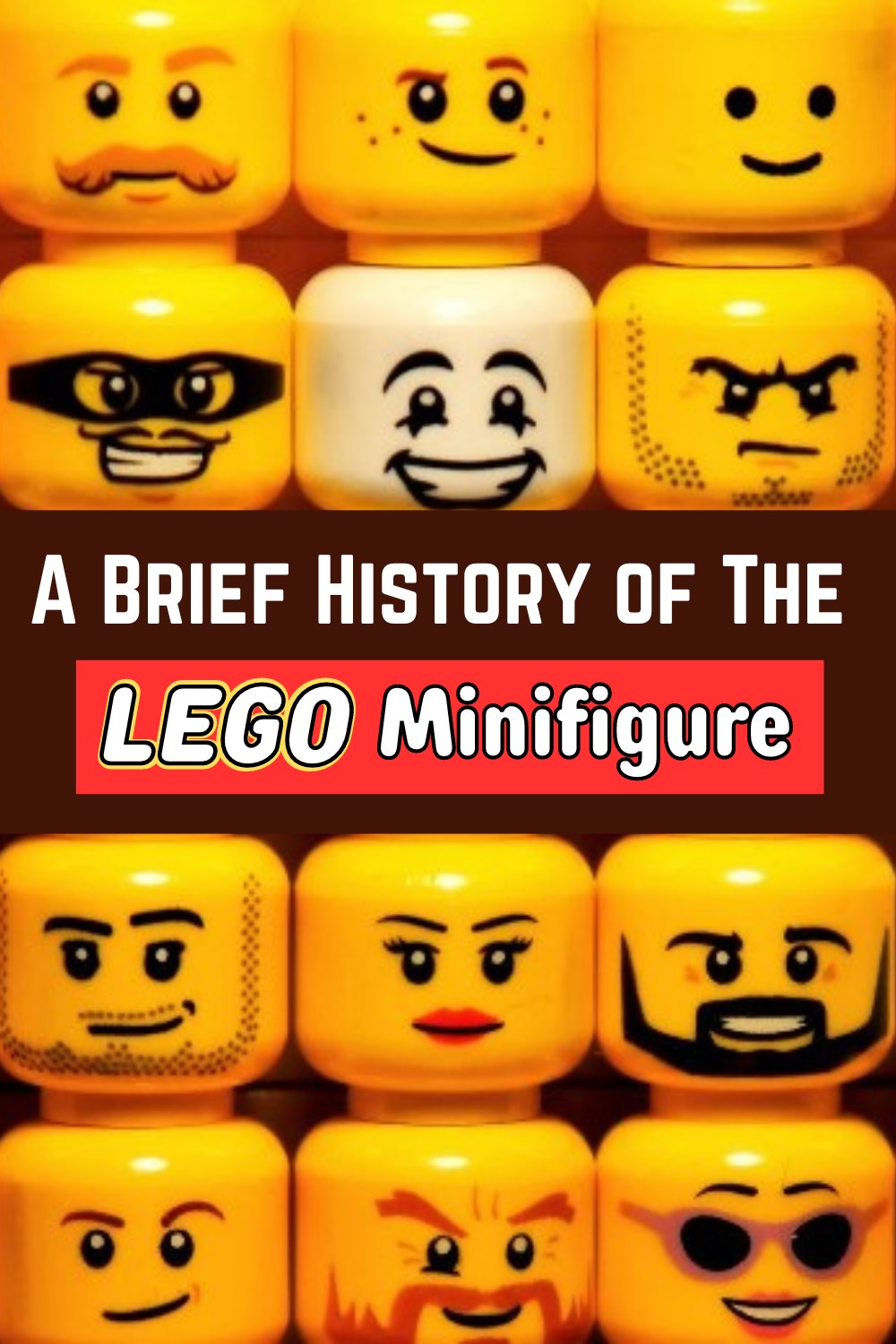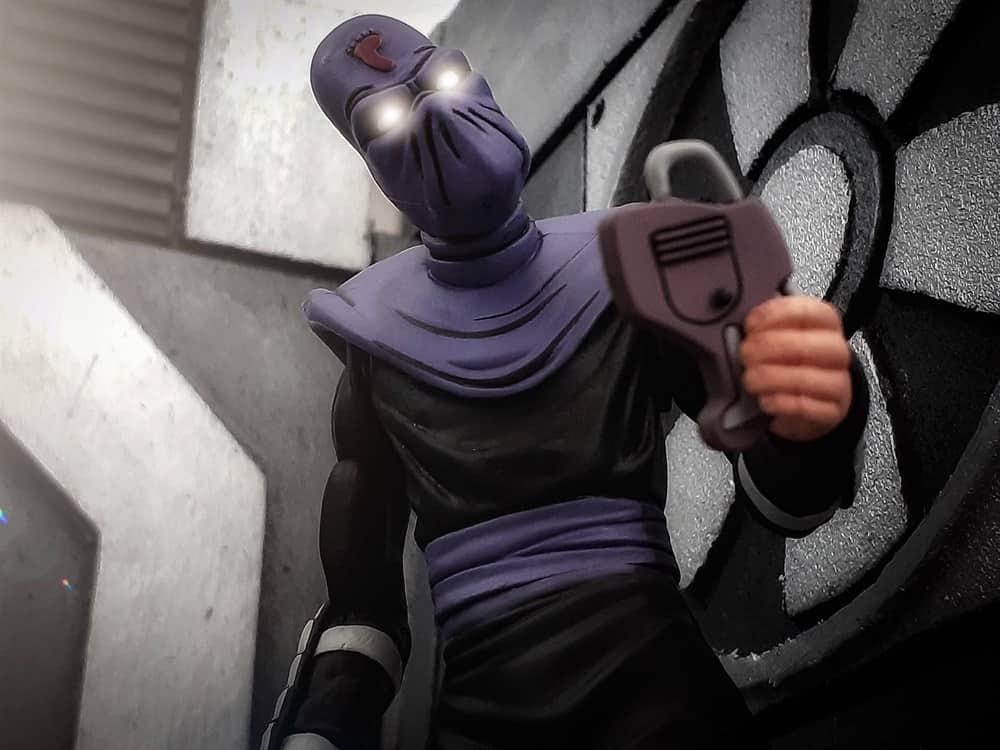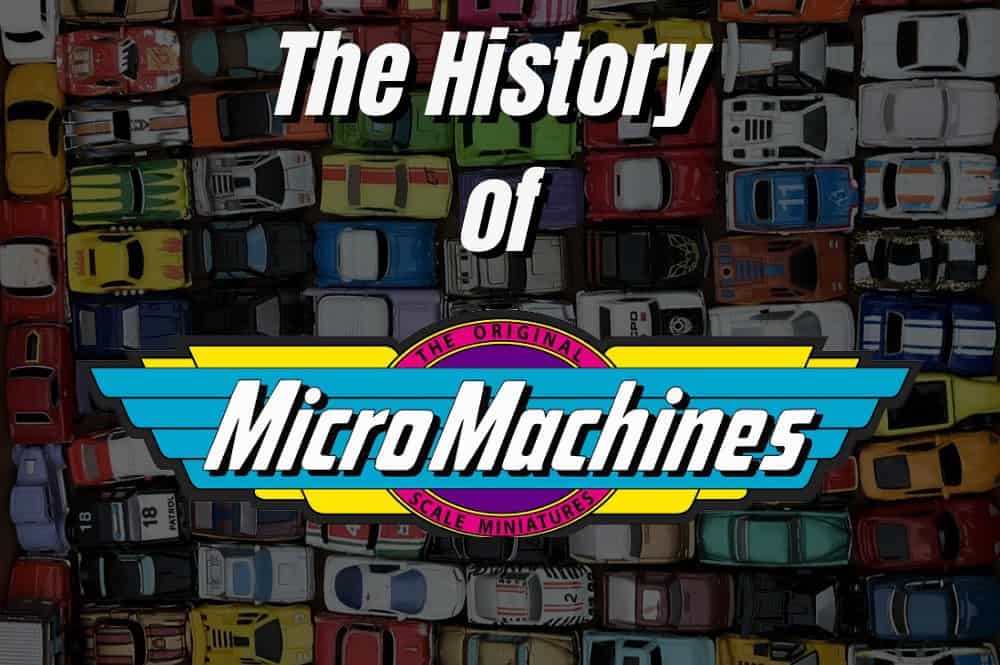There is nothing that represents the childhood of millions of children more than LEGO toys.
Who didn’t spend hours building everything that came to mind with the magical colored blocks, or assembling sets of characters from famous franchises? And to be honest, some of us still have these habits.
Despite all the presence that this company has in our lives, we don’t know many things about them. For example, LEGO minifigures did not see the light of day until 1978, 45 years after the company was founded. A fact that will surely surprise more than a few.
Not coincidently, that is what we are going to talk about today, LEGO minifigs, and how they have evolved. Although they have retained some basic features (the holes in their feet to attach them to the blocks, the yellow head, and hands that allow them “grab” some elements) these toys have changed over the years, from having no face, to become characters of Disney, Marvel, and every franchise that is successful in Hollywood.
The Beginnings Of Lego
First things first, a brief overview of the origins of LEGO. It was founded in 1932 in Denmark, by the carpenter Ole Kirk Christiansen, a resident of the city of Billund.
At first, he was dedicated to creating miniature wooden furniture, but in 1934 he decided to switch to toys because of the success they were having, as they were much cheaper to produce than metal ones. That same year he renamed his business LEGO, an acronym for the Danish term “Led godt”, which means Play Well.
Over the next decade, Olek replaced wood with plastic, creating the famous colorful building bricks.
In 1958, they got the finishing touch by patenting the stud-and-tube coupling system underneath the blocks, allowing them to be hooked to each other. With this, the only limit was the imagination, a phrase that represents what LEGO bricks are all about very well.
Unfortunately, that same year, Olek died of an acute myocardial infarction, leaving control of the company to his son Godtfred Kirk Christiansen, who was previously vice president.
The LEGO Group established itself in the European market in the 1960s, distributing block sets along with other toys such as vehicles and board games around the world.
Children in the USA had to wait until the 1970s to get their hands on the famous bricks, and that same decade brings us to the main topic.
The First LEGO Minifigures
At LEGO, it was clear to them that the next step in their growth was to start making figures that would accompany their products and bring them to life.
The first attempt at LEGO Minifigures was in 1974, launching as the “LEGO Family Figures” set. It was a pack of 49 pieces that assembled average-sized figures consisting of a couple of parents, a boy, a girl, and a grandmother.
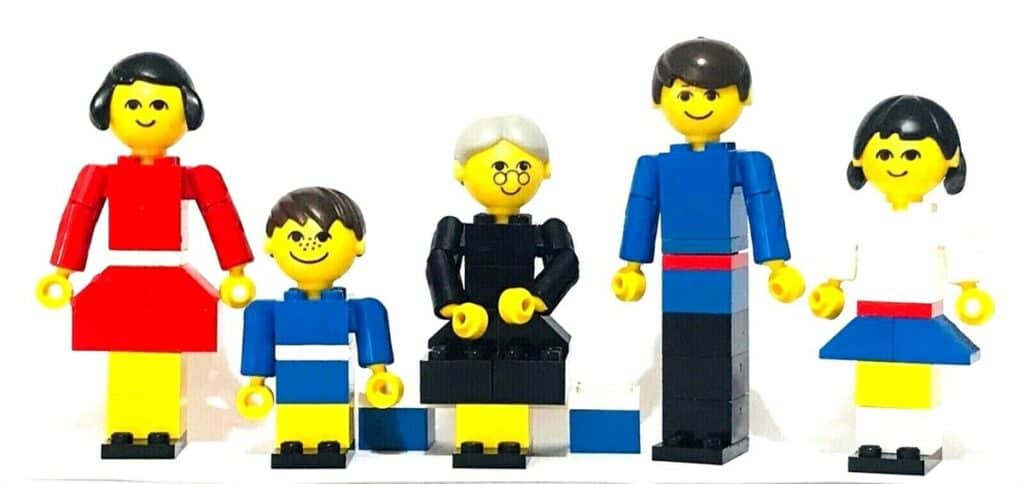
Their design was quite different from the Minifigures we know and love today, standing out for their long articulated arms, sphere-shaped head, and legs that were made from actual LEFO building blocks. The shape of their hands was also very peculiar, with a hole in the middle, but thanks to this they could hold hands, something that today’s LEGO figures cannot do.
Beyond these differences, the basic concepts were already on the table, such as the yellow color that did not represent any race and the fact that they can be coupled with the blocks. They were a big hit with children, but there was still room for improvement and, above all, miniaturization.
The Minifigure That Changed Everything
The designer of LEGO toys at the time, Danish Jens Nygaard Knudsen, now remembered as a great inventor, was responsible for the initial design of the first minifigures. The first thing he solved was the size, making the figures smaller up to a height of 1.5 inches, but that created a new problem, no mobility in the extremities.
Despite that, the figures were marketed from 1975 onwards in LEGO sets, such as police, fire, and paramedic stations.
The little guys were yellow, but had no arms and legs, as Knudsen was still figuring out how to make them correctly. They also had no faces, so the only way to “customize” them was to put different hats on them or change their bodies, both accessories sold well.
After many days of work and 50 prototypes later, Knudsen came up with the right figure. And in August 1978, LEGO introduced the world to its first minifigure, which had the basic of the ones we know today.
The toy was a police officer, with all the clothing that goes with that and a cheerful face. In addition, the complete package included a police car, although it was not yet adapted to take passengers. This minifigure belonged to the first line of LEGO-themed sets.
A variant of the police officer was released in 1978 in the factory set, starring a man minifig (literally it’s just a man) and various other figures, including the policeman.
As a fun fact, since its creation, this first character has appeared in 104 sets for the company, which has earned revenues of more than four billion dollars.
LEGO Minifigures from the 1970s
Accompanying the police officer, LEGO soon after released 19 more minifigs in Town, Castle, and Space sets, associated with various professions, such as astronauts, firefighters, and doctors.
These first characters were created to motivate children to make their own stories in the world they created with the bricks, so they focused on professions, although that changed a few years later.
In this line, the female figures had long hair pieces, unlike the men, who wore caps, space helmets, or cranial armor, until 1979, when the male hair pieces were manufactured.
80s LEGO Minifigures
This is where the characters started to become more unique. In the 1980s, the minifigures were greatly improved, and more themes were added to the sets.
The heads of the little yellow people went from all having the same expression (two eyes and a smile) to including other elements such as beards, mustaches, and even an eye patch for the Lego pirates, a series that was released in 1989, along with female minifigs from that era.
In addition, the number of accessories increased, with top hats, visors, briefcases, weapons such as crossbows and swords, and many more.

LEGO Minifigures of the 90s
Throughout this decade, LEGO expanded its minifigure catalog by adding new professions and characters, including even a ghost covered in his white sheet. More female faces also appeared, with lips painted red and eyelashes over the eyes.
It was in 1999 that they made a very important leap in the company, the adaptation of characters from other licenses.
The first franchise that had this honor was Star Wars, with a collection of 5 sets that included some famous vehicles such as the X-Wing, the TIE-Fighter, and the Landspeeder, and of course, included characters like Luke Skywalker, Darth Vader, Darth Maul, Obi-Wan, and the Stormtroopers.
At first Lego executives opposed this idea, because of the “violence” in the Star Wars stories, remembering that Olek Kirk Christiansen never wanted to make war toys.
But Peter Eio, the president of LEGO Systems, thought differently, seeing a great opportunity to collaborate with Lucasfilm as the new Star Wars trilogy was about to be released. So he proposed to the LEGO board of directors to create licensed products, something they had not done before but because of market trends they had to do it or they would lose the attention of their biggest customers, children.
To convince the executives, Eio talked to them about Star Wars as a war between good and evil, a simple concept for all children, and even surveyed parents to see how well they thought of the saga.
Finally, Kjeld Kirk Kristiansen, Olek’s grandson, and owner of the company at the time ended up giving the green light to the project, and the rest is history.
As a curious fact, this line was LEGO’s first big challenge with the minifigures, as they had to adapt to each specific character of this galaxy far, far away.
Figures like Jar Jar Binks or R2-D2 were special because they broke the classic parameters, such as design and skin tone, to which LEGO and its customers were accustomed, but that was precisely the reason for its success, to adapt so faithfully the original material but at the same time maintain the essence of LEGO.
LEGO Minifigures of the 2000s
The 2000s were Rock and Roll at LEGO, who after the huge success of the LEGO Star Wars line, began to produce minifigures of the most popular franchises, such as Harry Potter, Spongebob Squarepants, Batman, Indiana Jones, Spider-Man, The Lord of the Rings, Ferrari, The Simpsons, TMNT and of course, Disney.
Each one of these adaptations included several sets, with vehicles and scenery from those fantastic worlds. The poor guy who has to count the total number of bricks in these collections.
It is worth noting that all these toys had a natural skin color, according to the original material, as LEGO became more flexible with that theme in 2003, when it created minifigures of NBA players, which of course had a realistic tonality, along with their facial expressions.
In the case of the original LEGO lines, the facial expressions remained the classic ones, a pair of small black circles as eyes (the newer ones have a slight glow to them) and a neutral smile. This changed for the famous franchise collections, which had more detailed expressions along with hair pieces for the character they are adapting.
Minifigures of the 2010s
Another hugely successful year for LEGO, in which they added other franchises to their licensed toys and solidified their presence in the global market. More than 45 years after the first LEGO minifigure, there are now more than 8,000 different minifigures with more than 650 unique expressions.
There’s nothing LEGO hasn’t done, and if you think they’re missing a figure, they’re probably already developing that.
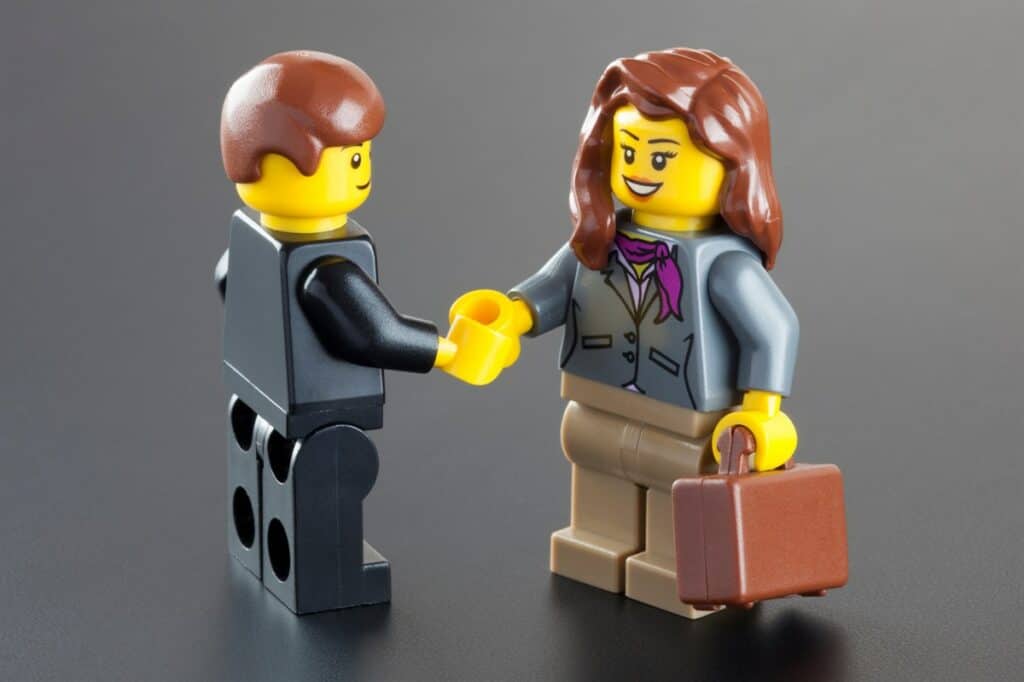
LEGO Forever
Today, LEGO is an entertainment giant that has expanded to other media such as LEGO movies, video games, TV, furniture, and basically everything that is marketable. And its secret lies in the freedom that its sets and minifigures give you, allowing you to create anything, even in real size.
Another of the company’s qualities is its ability to adapt. Since the 1960s, they have always been there to meet the expectations of the generations. Although they have gone through some difficulties, they were minimal before the giant they are today.
And to think that it all started with that little police officer, who would have thought that such a small and straightforward figure would be the beginning of a great story?
From toys without faces or limbs to characters of all races, professions, worlds, and even states of life (yes, there are minifigures of skeletons, zombies, and more).
So many figures have already been sold that their growth data applied to the human population would imply that there would be 144 billion people on Earth right now.
With LEGO, imagination is the only limit.
